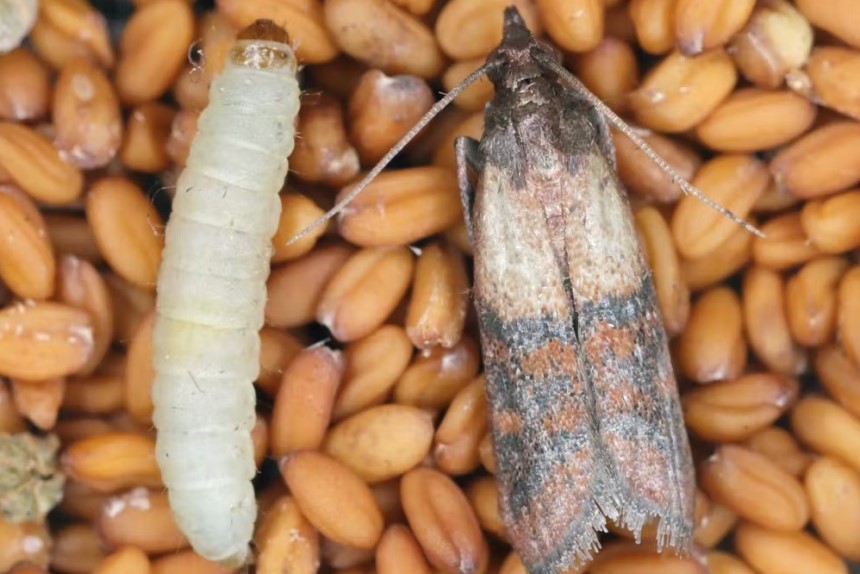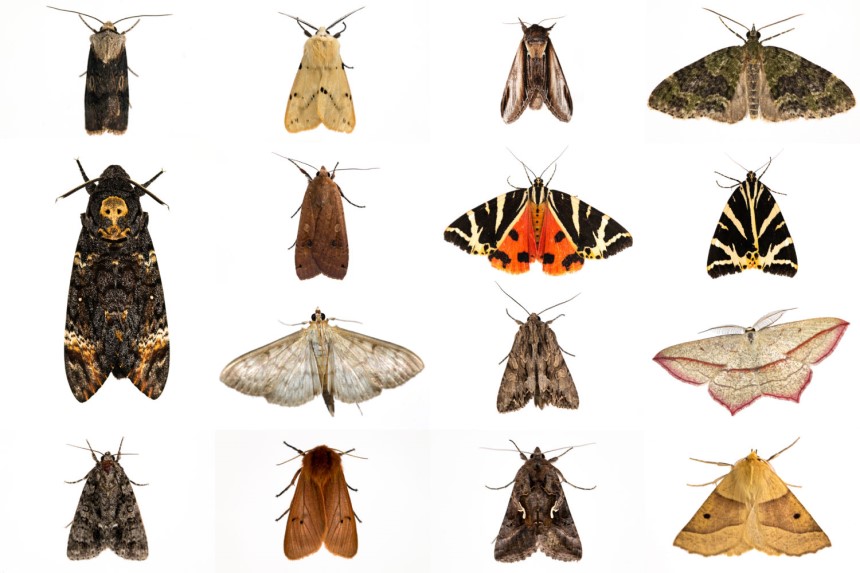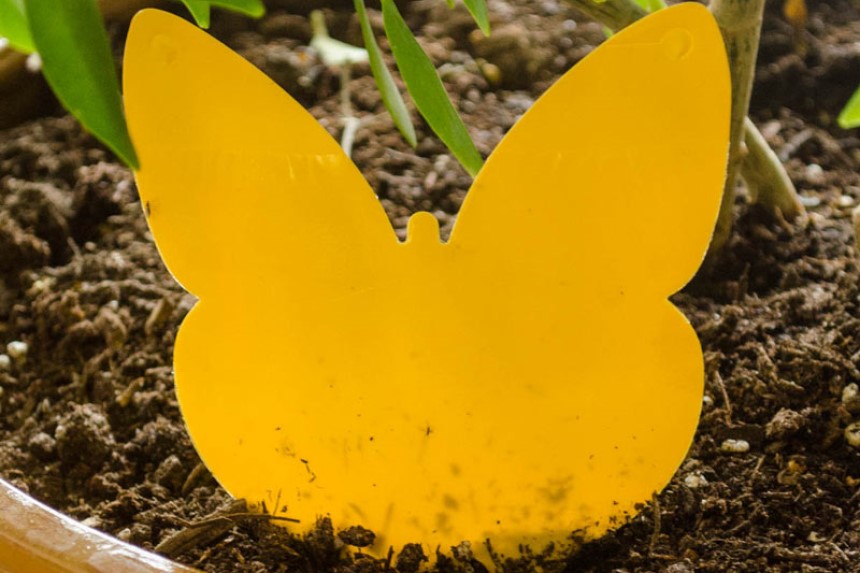

Moths are as harmless as they come until they start eating your clothes in the closet or are a nuisance at a backyard barbecue party or cookout. A moth infestation can cause untold levels of chaos in your home. Besides their attraction to light and chewing fabric in your home, moths lead interesting lives. Exterminating a moth infestation is much easier when you know how the insects live.
So, how long does a moth live? The winged insects’ lifespans vary across the different species. This article has everything you would want to know about moths, including their appearance, life cycle, how they reproduce and spread, and tips on getting rid of them. You will also get to know the different moth species and how their overall lifespan compares to that of butterflies.
There’s more to moths than just dull-colored wings and an attraction to light. They come in different species with different characteristics and lifespans.
 How Do Moths Look Like?
How Do Moths Look Like?Moths look like butterflies and are often confused for one another. If you take a closer look, you can tell the difference between the two. Moths appear stout and furry with dull-colored wings. They exhibit earth tones like brown, black, gray, and white, except for a few species like the silkworm moth, which has unique colors and long tails on its hind leg.
Since moths are small in size and drab in color, it can be hard to tell the various species apart. To avoid any confusion, you can check with the department of entomology in your area to identify the common moth species in your area.
Moth eggs are super tiny and hard to spot, but they look like small white dots in a line or cluster. In the home, moths are likely to lay eggs in fabrics that their hatchlings will feed on. You may notice the eggs on fabric if many have been laid in a single spot.
Moth larvae look like wriggling white rice grains. When freshly hatched, moth larvae are just a few millimeters long but grow as big as 1.5 cm (1/2 inches) long.
Just like other caterpillars, moths undergo metamorphosis. According to a journal article on Science Direct, they undergo a short life cycle that can last as short as 19 days or as long as 36 days, depending on the temperature.
A moth’s life cycle has four stages: eggs, larva, pupa, and adult.
A typical female moth can lay 50 to 100 eggs, depending on the species. Most female moths die after laying eggs. An article by Michigan State University Extension Trusted Source Eliminating egg masses now will prevent leaf eating gypsy moth caterpillars next spring - MSU Extension Spring caterpillar hatch can be lessened without using chemicals by finding and eliminating the egg masses from which the caterpillars hatch. www.canr.msu.edu explains that it is part of the genetic makeup. The eggs normally hatch where they are laid as the female moth cannot fly. Most species leave their eggs unprotected for one to two weeks. The caterpillars, or baby moths, get their nutrition from the eggs they are encased in.

The pupae hide away in a secluded cocoon for several days. According to an academic paper by the Academy of Natural Sciences by Drexel University Trusted Source Butterfly Life Cycle - The Academy of Natural Sciences of Drexel University Butterflies, moths, beetles, flies and bees have complete metamorphosis. The young (called a larva instead of a nymph) is very different from the adults. It also usually eats different types of food. ansp.org , moths undergo a process called histolysis when metamorphosing into adults. Histolysis involves releasing special cells that activate and break down the body into a sticky substance that gradually remodels itself. Histolysis is affected by the environment. Moths in warmer climates will hatch and mature faster than those in cooler climates.
Moth adults emerge from their cocoon after 10 to 30 days, depending on the species. As mentioned before, the weather and climate in the area they are cocooned in affects the incubation time significantly. Moths don’t emerge from the cocoon and begin flying right away. They rest for a few hours to dry and adapt to their new body. The inability to fly makes the freshly hatched moths highly vulnerable to predators in their environment.
The video below shows a complete life cycle of a clothes moth.
Moths mating begins right after the female emerges from the cocoon. The females release pheromones to attract the male moths. Therefore, you are likely to experience an increased moth population if female moths hatch in your home. After mating, the female finds an ideal place to lay its eggs.
The eggs hatch into larvae, which feed on their preferred source of the nutrient. Clothes and carpet moths will feed on natural fibers like wool, silk, and fur, while pantry moths will feed on the cereals in your pantry. The moth larvae or caterpillars can feed for weeks or months before forming cocoons.
Clothes and carpet moths can live in your fabric for up to 30 months if the weather is not conducive for them to spin a cocoon.
When the environment is conducive, the larvae will spin a cocoon and go into hiding for about eight to fifty days, depending on the species. When the adults emerge, they will lay eggs again in a matter of four days.
To get rid of pantry moth, you can get a moth trap, such as a highly effective Terro T2950 Closet & Pantry Moth Trap Plus Alert. You can also place it anywhere thanks to its versatile and attractive design.
According to an article by Smithsonian Trusted Source Moths | Smithsonian Institution Numbers of species. Moths are in the insect Order Lepidoptera, and share this Order with Butterflies…. Learn more www.si.edu , there are 160,000 moth species in the world. The US has 11,000 species with distinctive characteristics. Therefore, it is almost impossible to identify all the types of moths. Some of the most common moths you are likely to encounter include;
 How Long Do Moths Live?
How Long Do Moths Live?There is no elaborate answer to this question. Moth’s lifespan varies across the different species. Other factors like latitude, time of the year, and weather conditions in the area also affect a moth’s lifespan.
Depending on the species, egg-laying takes four to seven days, and the eggs hatch in four to ten days.
Larvae feed for three months and, if the environmental conditions are not suitable, can live up to 30 months.
Many studies claim that winged adult moths of many species live for only a week or two. Female moths outlive the male by a few days. Some species have a longer adult life span, especially those that emerge in late summer or early fall. They are forced to hibernate in a sheltered spot.
The total lifespan of a moth is a sum of the time it spends in the larval, pupal, and adult stages. Most moth species produce two generations in a year, such that when one generation is fully mature and mating, another is in the pupal stage, growing into adults.
Food availability and environmental conditions are the primary factors that affect a moth’s lifespan. Moths born from eggs laid in the winter take longer to mature into adults and will have a total lifespan of 10 to 11 months. Some moth species in the arctic and other places with extremely cold weather can live as long as two years. The same applies for moths in extremely hot environments. Moths in deserts can stay in the pupal stage for up to seven months waiting for rain. Moths born from eggs laid in warmer months will mature into adults quicker and will have an average lifespan of four to five months.
Since an adult moth’s primary function is to reproduce and produce a generation every year, they don’t stay around for long. Some species like the gypsy moth don’t even have a mouth to eat food, thus die after two or three weeks. The short time is for them to find a partner, mate and lay eggs.
For species that don’t produce two generations each year, the average lifespan of the moth will be about 12 months.
Moths have a lot of similarities with butterflies. They both develop through metamophorsis. Their life cycles have four similar stages; eggs, larva, pupa, and adult. Just like moths, butterflies hatch from their eggs and go through several instars before spinning a cocoon. When they emerge from the cocoon, they also have to wait for their wings to dry out as they adapt to their new body.
Moths have a longer life span than butterflies. According to an article by the department of horticulture at the University of Kentucky Trusted Source All about butterflies | Department of Horticulture Both butterflies and moths belong to the same insect group called Lepidoptera. In general, butterflies differ from moths in the following ways. www.uky.edu , butterflies only live on average of a week to a month depending on the species. Just like moths, butterflies’ lifespans are affected by environmental conditions. for instance, the monarch butterfly can live for a few weeks or a couple of months depending on where it is born. Those born towards the end of summer can hibernate, thus lengthening their lifespans than other generations.
Moreover, moths’ lifespan is limited because their females die after laying eggs. Butterfly females do not die after laying eggs, except for very few species. Nonetheless, both insects have interesting lives. The remarkable transformations they undergo in the different life cycle stages to emerge into such beautifully winged creatures are worth observing.
Some moths like pantry, carpet, and clothes moths are pests because they live and feed on stuff within the home. If you have an infestation, it is safer to exterminate it before it gets out of hand. First, you need to know the type of moth that has invaded your space so you can deal with it appropriately.
If you have a wild moth in your house, it has no interest in living in your space. Simply open the windows or the door to let it out.
If you have the clothes, carpet, or pantry moths, take the following steps in getting rid of them;
Carpet and clothes moths live on fabric because they feed on natural fibers like silk and wool. Remove the carpet and your clothes from the closet for proper cleaning and disinfection. Use heat to clean to kill all the moths including their eggs.
As for the pantry moth, remove the grain container or flower bag you find them in. Also, get rid of other open food sources because it is highly likely that they are harboring eggs.
Cleaning all the possible hideouts like carpets and closet spaces regularly will kill any larva or pupae hiding.
Use a hair dryer to apply heat in all the cracks, crevices, closet spaces, and all the spots the moths could lay eggs. Heat will kill them instantly.

If you have moth problems, check out Dr. Killigan’s Premium Pantry Moth Traps with Pheromones Prime. It is highly effective and offers superior defense. Moreover, using it is a breeze.
A moth in your house can be a sign of an infestation or an accidental occurrence. To handle either of the situations appropriately, you need to have some knowledge about moths including how long they live. How long does a moth live? A moth can live in your house for 3 to 30 months depending on the species and the environmental conditions.
Identifying the different types of moths can be daunting as there are more than 100,000 species in the world. You should only be worried about pest moths like the pantry moths, webbing clothes moths, and carpet moths that can damage your household items. You can use any of the methods suggested in the article to get rid of the moths. If you feel you can’t handle the infestation yourself, get help from a pest control professional.